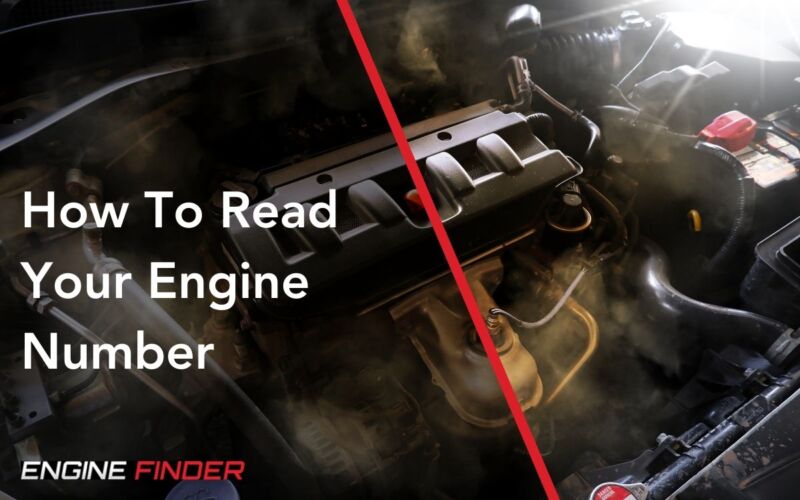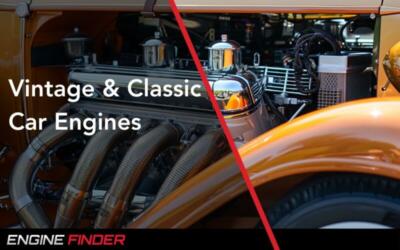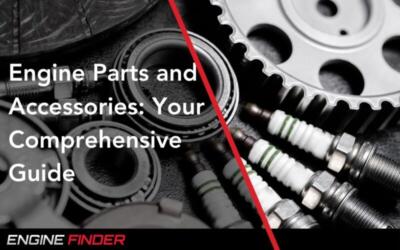Introduction
As a car enthusiast or potential buyer, understanding how to decode an engine number can provide valuable insights into a vehicle’s history and specifications. The engine number, also known as the engine serial number, is a unique identifier stamped onto the engine block during manufacturing. By deciphering this code, you can determine crucial details such as the engine type, manufacturing date, and place of production. In this article, we’ll explore the various components of an engine number and provide a step-by-step guide on how to decode it.
Key Takeaways
| Key Takeaway | Description |
|---|---|
| Engine Number Decoding | Essential for identifying engine type, verifying authenticity, and ordering parts. |
| Engine Number Components | Includes manufacturer code, engine type code, manufacturing date, assembly plant code, and serial number. |
| Decoding Process | Locate the number, identify the manufacturer, determine engine type, decipher manufacturing date, and identify assembly plant. |
| Examples | CHE350B1122 for Chevrolet, FOD460C3E45 for Ford, indicating engine specifics and production details. |
| Resources | Manufacturer websites, online databases, vehicle history reports, and automotive forums for decoding help. |
| Importance | Decoding provides critical information for purchasing, repairing, and verifying vehicle engines. |
The Importance of Engine Number Decoding
Decoding an engine number is essential for several reasons:
- Identifying the Engine Type: The engine number can reveal the specific engine model, displacement, and configuration, helping you determine if it matches the vehicle’s original specifications.
- Verifying Authenticity: For classic or collectible vehicles, decoding the engine number can help verify the engine’s originality and ensure it belongs to the specific make and model.
- Ordering Replacement Parts: When purchasing replacement parts or performing repairs, knowing the exact engine type through the decoded engine number ensures you obtain the correct components.
- Determining Manufacturing Date and Place: The engine number often includes information about the manufacturing date and factory location, which can be useful for assessing the engine’s age and production history.
Components of an Engine Number
While engine number formats can vary between manufacturers, they typically include several key components:
Manufacturer Code
- Usually the first few characters of the engine number.
- Identifies the manufacturer of the engine, such as Chevrolet (CHE) or Ford (FOD).
Engine Type Code
- Indicates the specific engine model, displacement, and configuration.
- May include letters and numbers representing the engine family, fuel system, and horsepower rating.
Manufacturing Date Code
- Represents the month and year the engine was manufactured.
- Often consists of a letter for the month (A=January, B=February, etc.) and a number for the year (1=2001, 2=2002, etc.).
Assembly Plant Code
- Identifies the factory or assembly plant where the engine was produced.
- Usually a single letter or number assigned to each manufacturing facility.
Serial Number
- A unique identifier for each individual engine.
- Helps track production sequence and can be used for warranty and service purposes.
Decoding the Engine Number: Step-by-Step
To decode an engine number, follow these steps:
- Locate the Engine Number: The engine number is typically stamped on a metal plate attached to the engine block or cylinder head. Consult your vehicle’s manual or online resources to determine its exact location.
- Identify the Manufacturer Code: Look for the first few characters of the engine number, which usually represent the manufacturer. Refer to online databases or manufacturer-specific resources to determine the corresponding manufacturer.
- Determine the Engine Type: The next set of characters often indicates the engine model, displacement, and configuration. Cross-reference this information with the manufacturer’s engine codes to identify the specific engine type.
- Decipher the Manufacturing Date: Look for a letter and number combination that represents the month and year of production. Use the month-letter correlation (A=January, B=February, etc.) and the year code (1=2001, 2=2002, etc.) to determine the manufacturing date.
- Identify the Assembly Plant: The assembly plant code, usually a single letter or number, can help you determine where the engine was manufactured. Consult the manufacturer’s resources to match the code with the corresponding factory location.
Examples of Engine Number Decoding
Let’s look at a few examples to better understand engine number decoding:
| Engine Number | Decoding |
|---|---|
| CHE350B1122 |
|
| FOD460C3E45 |
|
Resources for Engine Number Decoding
To assist with engine number decoding, consider the following resources:
- Manufacturer Websites: Many automakers provide information on their engine numbering systems and offer online tools for decoding.
- Online Databases: Websites such as Engine Labs and NastyZ28 offer comprehensive guides and databases for decoding engine numbers from various manufacturers.
- Vehicle History Reports: Services like CarFax and AutoCheck can provide detailed vehicle history reports that include engine information based on the VIN (Vehicle Identification Number).
- Automotive Forums: Enthusiast forums dedicated to specific makes and models often have knowledgeable members who can assist with engine number decoding and share their expertise.
Conclusion
Decoding an engine number is a valuable skill for any car enthusiast or potential vehicle buyer. By understanding the various components of the engine number and following a step-by-step decoding process, you can uncover essential information about the engine’s type, manufacturing date, and place of production. This knowledge can help you make informed decisions when purchasing a vehicle, ordering replacement parts, or verifying the authenticity of a classic car.
Remember to utilize the available resources, such as manufacturer websites, online databases, vehicle history reports, and automotive forums, to aid in your engine number decoding efforts. By combining these resources with a keen eye for detail, you’ll be well-equipped to decipher the secrets hidden within any engine number.
For more information on vehicle identification and maintenance, be sure to check out our other articles on engine sensor repair and common used engine problems. And if you’re in the market for a replacement engine, trust Engine Finder to connect you with engine importers in USA.
FAQ
What is an engine number?
An engine number, or engine serial number, is a unique identifier stamped on the engine block during manufacturing, providing information about the engine’s type, manufacturing date, and production location.
Why is it important to decode an engine number?
Decoding an engine number is important to identify the engine type, verify the engine’s authenticity, order replacement parts accurately, and determine the manufacturing date and place.
Where can I find the engine number on my vehicle?
The engine number is usually stamped on a metal plate attached to the engine block or cylinder head. Consult your vehicle’s manual or online resources to locate it precisely.
Can I determine the manufacturing date of an engine from its number?
Yes, the manufacturing date code within the engine number, often represented by a letter for the month and a number for the year, reveals the month and year the engine was produced.
What resources can help me decode an engine number?
Manufacturer websites, online databases like Engine Labs and NastyZ28, vehicle history report services, and automotive forums are valuable resources for decoding engine numbers.
Referenes:
- How to Decode Engine Number
- How to Easily Read Engine Codes
- Understanding BMW Engine Identification Codes
- Car Identifiers: How to Find VIN and Engine Number
- Engine Number Identification
- Engine Codes
- Engine Serial Number Reference Guide
- How to Find Out What Type of Engine Your Car Has
- Chevy Engine Code Stampings
- Identify Your Perkins Engine
- A Guide to Ford V8 Engine Block Casting Numbers 1952-1996
- Free Car Engine Number Check: Determine Your Car Engine Number
- Engine Serial Number Decode
- Tech: Chevy Engine Numbers
- Serial Number Information: Identification
- What’s Your Number?
- How to Decode Your Car’s VIN Number
- Classic Car VIN Lookup




